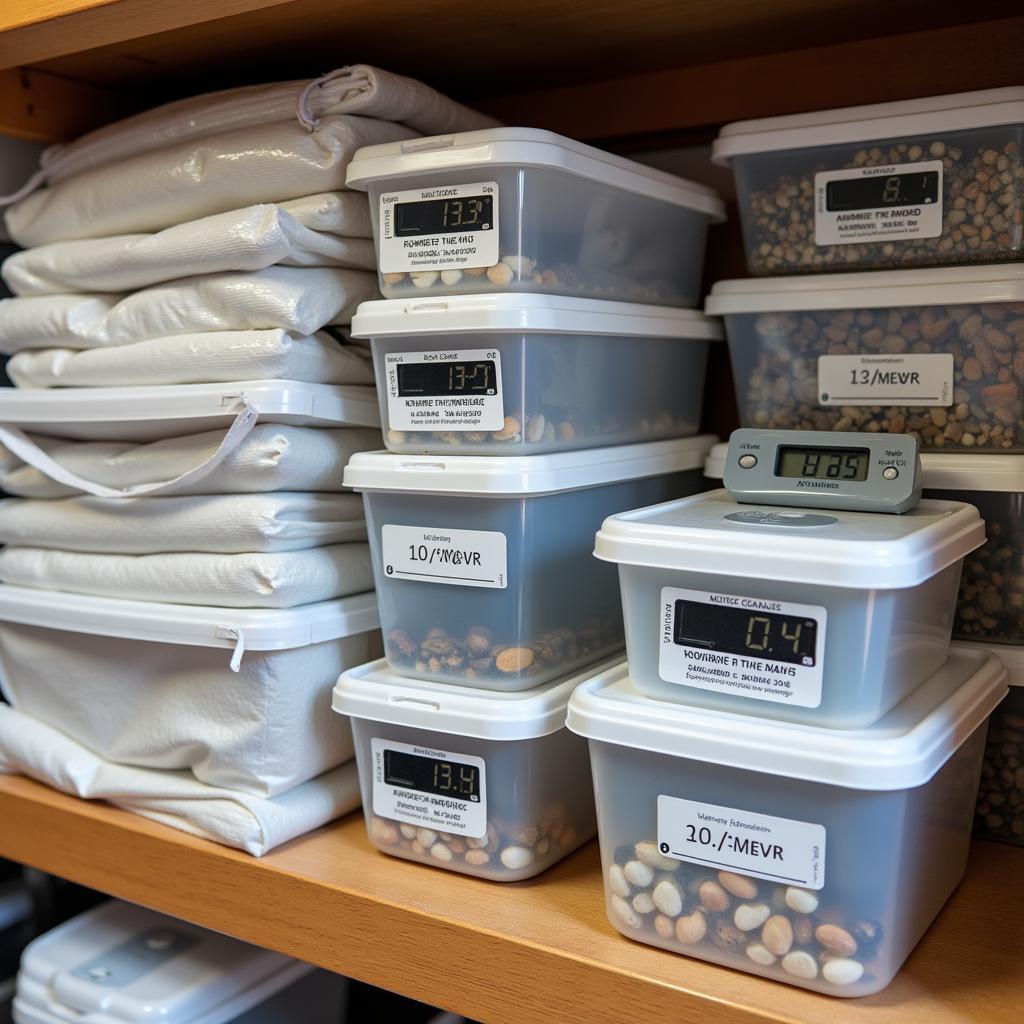Freeze-dried food offers incredible longevity, making it a popular choice for emergency preparedness and long-term storage. But can you store freeze-dried food in a garage? The answer isn’t a simple yes or no. While a garage can work, it’s essential to understand the factors that impact food quality and take precautions to ensure your investment lasts. Storing freeze-dried food properly is key to maintaining its nutritional value and edibility for years to come.
If you are looking for ways to enhance your emergency food storage, freeze-dried options are an excellent choice. Properly stored, these provisions can last for decades. You can learn more about creating an effective emergency food storage plan in our dedicated guide.
Storing freeze-dried food in a garage presents some challenges. Temperature fluctuations, humidity, and pests can all compromise the quality and shelf life of your food. However, with careful planning and the right storage solutions, it’s possible to mitigate these risks and successfully store freeze-dried food in your garage.
Factors Affecting Freeze-Dried Food Storage
Temperature
Temperature is the biggest concern when storing freeze-dried food in a garage. Extreme heat can degrade the food’s nutritional value and shorten its shelf life. Conversely, freezing temperatures won’t harm freeze-dried food, but repeated thawing and refreezing cycles can damage packaging and introduce moisture.
Humidity
High humidity is another enemy of freeze-dried food. Moisture can reactivate the enzymes in the food, leading to spoilage. It can also encourage mold growth and compromise the integrity of the packaging.
Pests
Garages are often havens for insects and rodents, which can easily chew through packaging and contaminate your food supply. Properly sealing your freeze-dried food is crucial to prevent infestations.
Best Practices for Storing Freeze-Dried Food in a Garage
To maximize the shelf life of your freeze-dried food in a garage, follow these best practices:
-
Use airtight containers: Invest in high-quality, airtight containers specifically designed for food storage. These containers will protect your food from moisture, pests, and temperature fluctuations.
-
Consider mylar bags: Mylar bags offer excellent protection against oxygen and moisture. Combine mylar bags with oxygen absorbers for optimal long-term storage. Learn more about how to store food in mylar bags on our website.
-
Monitor temperature and humidity: Regularly check the temperature and humidity levels in your garage. If possible, try to maintain a stable temperature between 50°F and 70°F and a humidity level below 60%.
-
Keep food off the floor: Store your food on shelves or pallets to protect it from moisture and pests.
-
Inspect regularly: Periodically inspect your food storage for signs of damage, pests, or spoilage.
If you’re interested in learning more about different types of emergency food, our article on vegan survival food kits offers a comprehensive look at plant-based options.
 Organized garage shelves with labels and temperature control for long-term food storage.
Organized garage shelves with labels and temperature control for long-term food storage.
Is Your Garage the Right Place? Alternatives to Consider
While a garage can be a viable option for storing freeze-dried food, it’s not always the ideal location. If your garage experiences extreme temperature fluctuations or high humidity, you might consider alternative storage locations, such as a cool, dry basement, a pantry, or even under a bed.
“Choosing the right storage location is just as important as choosing the right food,” says fictional expert, Dr. Sarah Johnson, a food scientist specializing in long-term food preservation. “A stable environment is key to preserving the quality and extending the shelf life of your freeze-dried food.”
Looking for ways to store your pet’s food safely outdoors? Our guide on outdoor dog food storage offers practical tips and advice.
Conclusion
So, can you store freeze-dried food in a garage? Yes, but it requires careful consideration and proper precautions. By following these best practices and monitoring your garage’s environment, you can successfully store freeze-dried food and ensure it remains safe and nutritious for years to come. Investing in patriot foods emergency food provides a great foundation for long-term preparedness.
FAQ
-
What is the ideal temperature for storing freeze-dried food? Ideally, freeze-dried food should be stored between 50°F and 70°F.
-
How long does freeze-dried food last? With proper storage, freeze-dried food can last for up to 25 years or even longer.
-
What are the signs of spoiled freeze-dried food? Signs of spoilage include mold, off-odors, and changes in texture.
-
Can I store freeze-dried food with oxygen absorbers? Yes, oxygen absorbers help extend the shelf life of freeze-dried food.
-
What type of containers are best for storing freeze-dried food? Airtight containers made of food-grade plastic or metal are ideal.
-
Do I need to refrigerate freeze-dried food after opening? Not necessarily, but storing opened packages in an airtight container in the refrigerator can help maintain freshness.
-
Where can I learn more about emergency food storage? Check out our comprehensive guide on emergency food storage for more information.
For further assistance, please contact us at Phone Number: 02437655121, Email: minacones@gmail.com Or visit us at: 3PGH+8R9, ĐT70A, thôn Trung, Bắc Từ Liêm, Hà Nội, Việt Nam. We have a 24/7 customer service team.